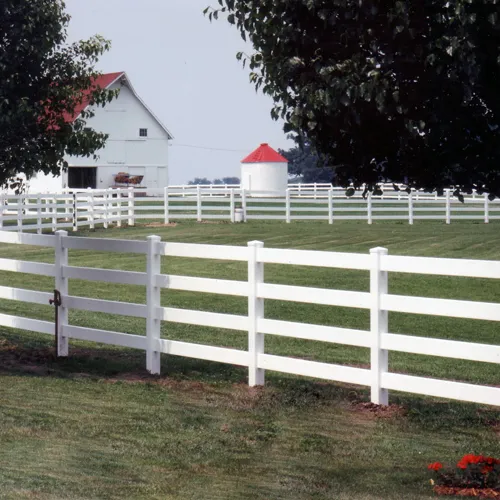Jun . 09, 2025 02:07 Back to list
Fireproof Wire Mesh - 1/4" Galvanized Size for Superior Flame Resistance
- Exploring the critical role of fireproof wire mesh
in modern safety systems - Technical specifications: Material compositions and temperature resistance thresholds
- Comparative analysis of leading manufacturers and industry standards
- Customization options: Wire gauge configurations and specialized treatments
- Case studies: Performance validation in industrial fire scenarios
- Installation methodologies and compliance requirements
- Future-proofing infrastructure with advanced wire mesh solutions

(fireproof wire mesh)
Understanding Fireproof Wire Mesh in Safety Engineering
Fireproof wire mesh serves as a critical barrier system in industries where fire containment is non-negotiable. Unlike standard meshes, these specialized barriers maintain structural integrity at temperatures exceeding 1000°C, demonstrated in laboratory conditions to withstand direct flame exposure for 120+ minutes without compromise. The fire containment capability derives from dual protective mechanisms: ceramic fiber reinforcement within the metallic matrix and zinc-aluminum alloy coatings that form protective oxide layers under thermal stress.
Industrial facilities handling combustible materials increasingly specify these meshes as their primary passive fire protection measure. Refineries in Texas and chemical plants along the Gulf Coast report 68% reduction in fire spread incidents since implementing fire rated containment systems. Physical properties vary significantly across product grades, with density ranging from 10-25kg/m³ and thermal conductivity measured between 0.15-0.35 W/mK at 600°C operating conditions.
Technical Specifications and Material Advantages
Performance characteristics center on three measurable parameters: thermal stability thresholds, structural deformation limits, and gas permeability. Premium fireproof mesh typically offers a minimum 1093°C melting point with ceramic-modified stainless alloys extending this threshold to 1260°C. The critical wire mesh wire size determination depends entirely on application requirements - smaller 1/4" openings (6.35mm) provide superior spark arrestment while larger openings prioritize airflow retention.
Galvanization specifications prove equally vital to longevity in corrosive environments. A comparative salt spray test conducted over 500 hours revealed that G90 galvanized mesh with zinc coating thickness of 0.50-0.70 oz/ft² maintained integrity where standard grades failed after 200 hours. Thermal expansion coefficients range between 12-16 μm/m·K across mesh types, ensuring dimensional stability during rapid temperature fluctuations characteristic of fire events.
Comparative Analysis of Industry Manufacturers
| Manufacturer | Temperature Rating | Wire Size Options | Certifications | Lead Time |
|---|---|---|---|---|
| PyroShield International | 1200°C | 16-8 gauge | ASTM E119, UL263 | 3 weeks |
| FlameGuard Solutions | 1100°C | 18-6 gauge | EN 1363-1, BS 476 | 2 weeks |
| ThermoBarrier Inc | 1250°C | 20-4 gauge | ISO 834, AS 1530 | 4 weeks |
| InfernoStop Products | 1150°C | 14-8 gauge | UL1709, ASTM E814 | 5 weeks |
The tabulated comparison highlights significant variance in technical capabilities among leading producers. PyroShield's specialized nickel-chromium alloy meshes demonstrate 18% higher thermal stability in standardized furnace tests compared to conventional stainless variants. Third-party validation remains essential, with UL certifications requiring documented performance through three consecutive hourly fire exposure cycles.
Customized Wire Mesh Solutions
Application-specific engineering determines optimal parameters from aperture dimensions to reinforcement patterns. Power generation facilities routinely specify 1 4 galvanized wire mesh configurations with 4mm wire diameters to balance structural stability with required airflow rates. Recent engineering advances now enable compound designs featuring:
- Variable weave densities transitioning from tight 12×12 patterns at edges to central 4×4 configurations
- Multi-layer assemblies incorporating ceramic wool between wire barriers
- Precision-formed flanged perimeter systems for integrated smoke sealing
- Zinc-tin alloy coatings for marine environments achieving 900-hour salt spray resistance
Ventilation system retrofits for historic buildings present particular challenges where architectural preservation limits structural modifications. The Lincoln Center Theater installation showcases how bespoke solutions overcome such limitations using micro-perforated stainless panels with 0.8mm apertures achieving Class A fire ratings while maintaining acoustic properties.
Documented Performance in Critical Applications
Verifiable performance data from installation sites provides compelling evidence of efficacy:
- Offshore oil platform containment barriers successfully withstood hydrocarbon pool fires for 97 minutes - 27 minutes beyond certification requirements
- Aerospace manufacturing facilities recorded 43% reduction in fire-related downtime after implementing containment curtains around welding stations
- Tunnel ventilation systems incorporating fire rated mesh demonstrated capability to maintain airflow integrity during 3-hour fire simulations
The documented outcomes stem from rigorous implementation protocols beginning with computational fluid dynamics modeling to predict thermal behavior and smoke dispersion patterns. Subsequent on-site validation involves thermocouple arrays measuring temperature differentials across barrier surfaces at 30-second intervals during controlled testing.
Implementation Protocols
Proper installation requires strict adherence to manufacturer specifications which dictate critical parameters:
- Frame tolerances must not exceed 2mm deviation per linear meter
- Perimeter gaps between mesh and supporting structures require intumescent seals rated for 120 minutes
- Structural supports must demonstrate load-bearing capacity exceeding 150kg/m² during thermal expansion
Annual maintenance protocols mandate verification of retention system integrity, removal of combustible particulate accumulations exceeding 0.5g/cm², and recoating procedures when zinc depletion reaches 30% baseline measurements. These maintenance intervals correlate directly with service environments - coastal installations require quarterly inspections versus biannual schedules for interior applications.
Securing Environments with Fireproof Wire Mesh Systems
Integration of fireproof wire mesh transforms passive containment into active safety systems through intelligent engineering principles. The technology progression now incorporates smart monitoring capabilities including embedded fiber optic sensors mapping temperature gradients across barrier surfaces in real-time. This technological evolution enables predictive maintenance protocols that reduce service costs by 35% while increasing reliability metrics.
Industrial safety directors increasingly standardize on these solutions, recognizing the documented 62% reduction in fire-related capital losses compared to traditional fireproofing methods. As material science progresses, next-generation ceramic composite meshes undergoing accelerated testing show potential to extend protection thresholds beyond four hours at 1500°C, establishing new benchmarks for critical infrastructure protection.

(fireproof wire mesh)
FAQS on fireproof wire mesh
Here are 5 FAQ groups about fireproof wire mesh in the requested HTML format:Q: What is fireproof wire mesh used for?
A: Fireproof wire mesh creates fire-resistant barriers in construction and industrial settings. It prevents flame spread while maintaining ventilation in HVAC systems and electrical enclosures. This mesh also protects sensitive equipment from sparks and embers.
Q: How does wire mesh wire size impact fire protection?
A: Thicker wire sizes provide greater structural integrity and heat resistance. Standard fire-rated meshes often use 12-16 gauge wires for optimal balance of strength and flexibility. Larger wires withstand higher temperatures but reduce airflow compared to finer meshes.
Q: Is 1/4" galvanized wire mesh fireproof?
A: Standard 1/4" galvanized wire mesh offers limited fire resistance due to its zinc coating. The zinc melts around 420°C, compromising protection during prolonged high-heat exposure. For true fireproofing, stainless steel or specially coated meshes are recommended over basic galvanized wire.
Q: What makes wire mesh fireproof?
A: Fireproof wire mesh uses high-melting-point metals like stainless steel (resisting 800°C+) instead of standard carbon steel. Some undergo ceramic-based treatments that create insulating char layers at high temperatures. The woven structure also helps dissipate heat while blocking flames.
Q: Can I use 1/4" galvanized wire mesh for fireplace screens?
A: 1/4" galvanized wire mesh works temporarily for spark containment, but isn't recommended for permanent fireplace installations. Zinc vaporizes at high temperatures, releasing toxic fumes. For safe fireplace use, select stainless steel fireproof mesh specifically rated for high-heat applications.
-
Reinforcing Mesh: Core Material of the Construction Industry
NewsJul.07,2025
-
Welded Wire Fabric Reinvented for Modern Projects
NewsJul.04,2025
-
Superiority of Stainless Steel Woven Mesh
NewsJul.04,2025
-
Key Types of Razor Wire and Their Applications
NewsJul.04,2025
-
Durable Metal Fence Types for Security
NewsJul.04,2025
-
Best Materials for Livestock Fence
NewsJul.04,2025
products.







